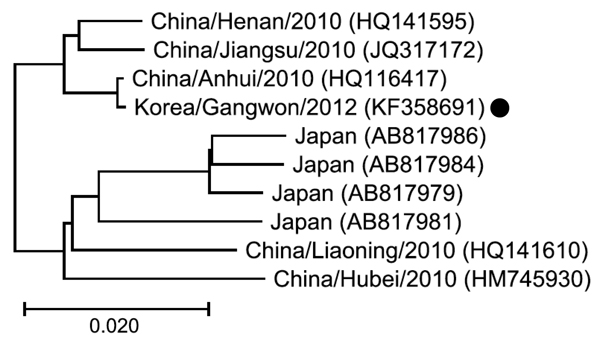Volume 19, Number 11—November 2013
Dispatch
Severe Fever with Thrombocytopenia Syndrome, South Korea, 2012
Figure 2

Figure 2. . . Phylogenetic tree for the RNA-dependent RNA polymerase (RdRP) gene sequences of the large segment of an isolate obtained from a patient in South Korea who died of an illness retrospectively identified as severe fever with thrombocytopenia syndrome (SFTS) (black dot) compared with representative SFTS virus strains from China and Japan. The tree was constructed on the basis of the nucleic acid sequences of the RdRP genes by using the neighbor-joining method. Location, year of isolation, and GenBank accession numbers are indicated. Branch length of the tree shows the evolutionary distance. Scale bar indicates 2.0% sequence distance.
1These authors contributed equally to this article.
Page created: August 07, 2013
Page updated: August 07, 2013
Page reviewed: August 07, 2013
The conclusions, findings, and opinions expressed by authors contributing to this journal do not necessarily reflect the official position of the U.S. Department of Health and Human Services, the Public Health Service, the Centers for Disease Control and Prevention, or the authors' affiliated institutions. Use of trade names is for identification only and does not imply endorsement by any of the groups named above.